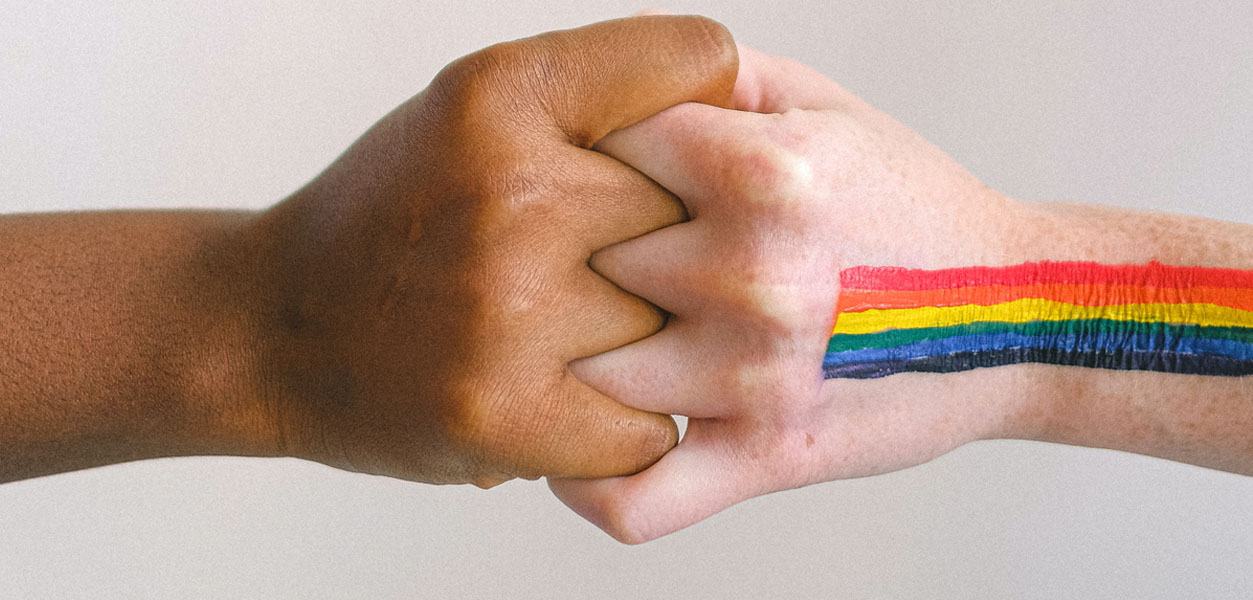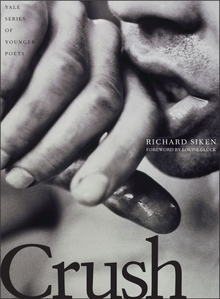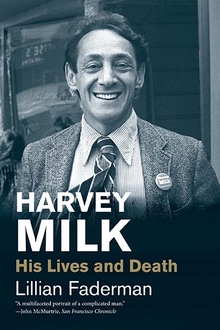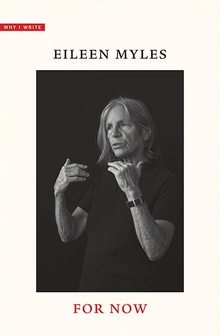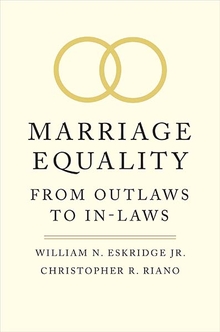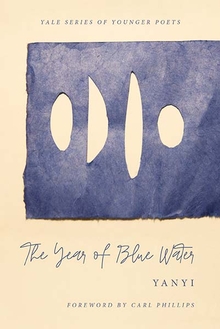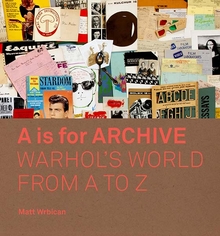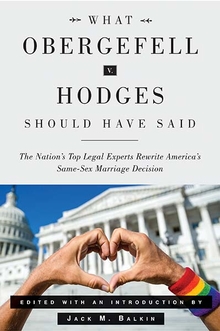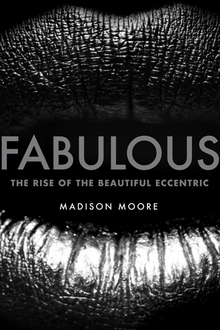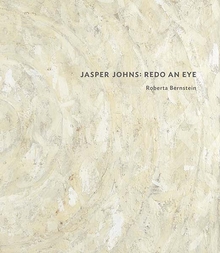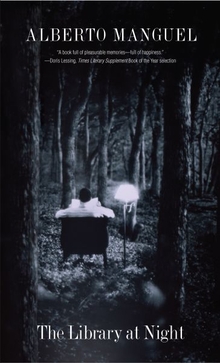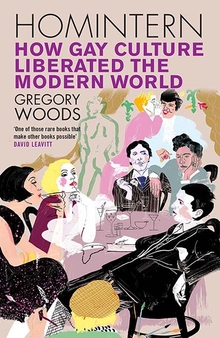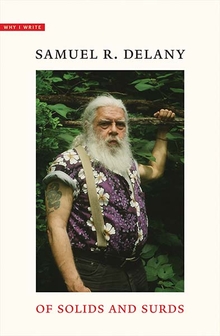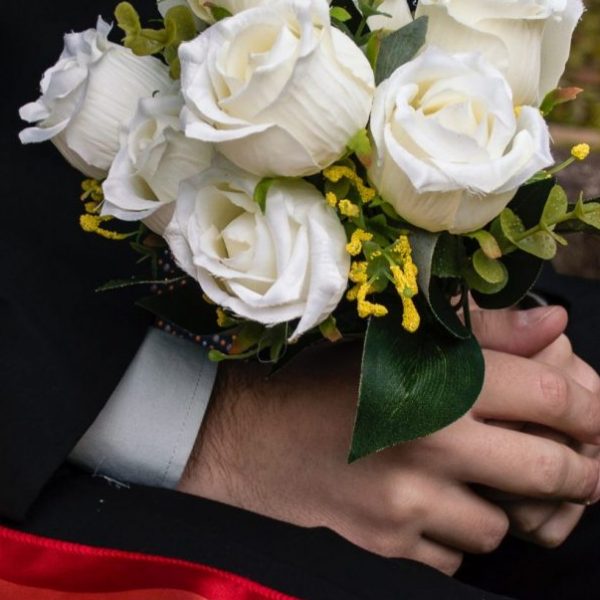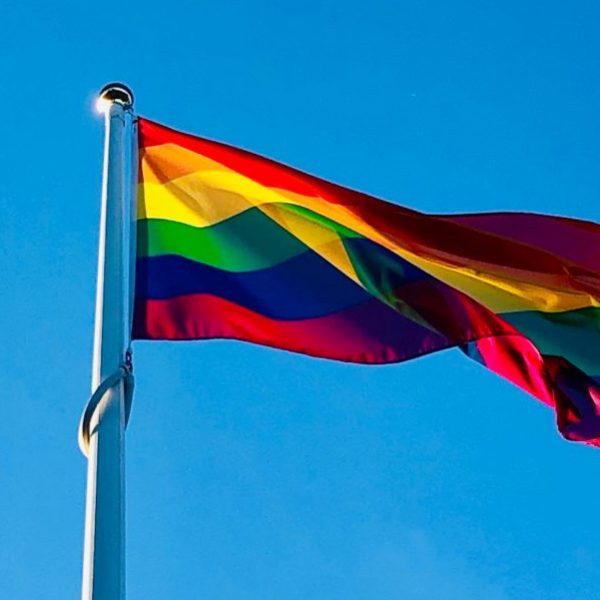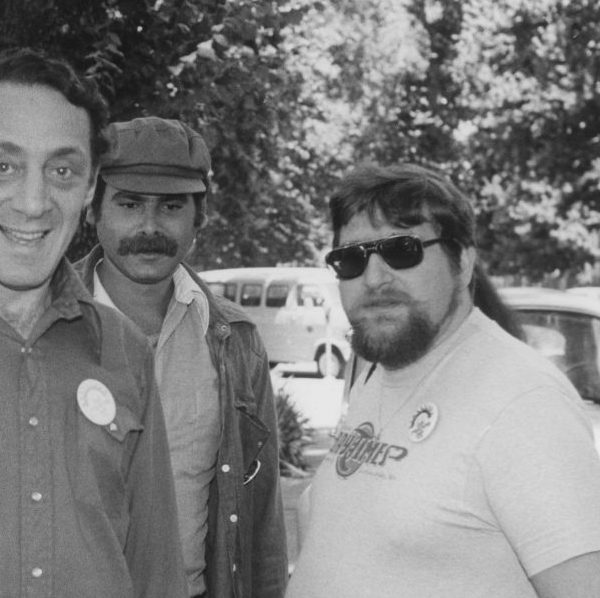Pride 2021 Reading List
Celebrate the LGBTQ+ community with our Pride 2021 reading list, featuring a collection of titles about gay icons and artists, legal debates and triumphs, cultural and literary criticism, works by LGBTQ+ authors, and more.
“This is a book about thrashing around in the great big world, being messy, being alive.”—Elizabeth A. Harris, New York Times Book Review
Richard Siken’s Crush, selected as the 2004 winner of the Yale Younger Poets prize, is a powerful collection of poems driven by obsession and love. Siken writes with ferocity, and his reader hurtles unstoppably with him. His poetry is confessional, gay, savage, and charged with violent eroticism. In the world of American poetry, Siken’s voice is striking.
In her introduction to the book, competition judge Louise Glück hails the “cumulative, driving, apocalyptic power, [and] purgatorial recklessness” of Siken’s poems. She notes, “Books of this kind dream big. . . . They restore to poetry that sense of crucial moment and crucial utterance which may indeed be the great genius of the form.”
Buy the Book
Amazon|Barnes & Noble|Bookshop|IndieBound
A lively and engaging biography of the first openly gay man elected to public office in the United States, a man fiercely committed to protecting all minorities
Harvey Milk—eloquent, charismatic, and a smart-aleck—was elected to the San Francisco Board of Supervisors in 1977, but he had not even served a full year in office when he was shot by a homophobic fellow supervisor. Milk’s assassination at the age of forty-eight made him the most famous gay man in modern history; twenty years later Time magazine included him on its list of the hundred most influential individuals of the twentieth century.
Before finding his calling as a politician, however, Harvey variously tried being a schoolteacher, a securities analyst on Wall Street, a supporter of Barry Goldwater, a Broadway theater assistant, a bead-wearing hippie, the operator of a camera store and organizer of the local business community in San Francisco. He rejected Judaism as a religion, but he was deeply influenced by the cultural values of his Jewish upbringing and his understanding of anti-Semitism and the Holocaust. His early influences and his many personal and professional experiences finally came together when he decided to run for elective office as the forceful champion of gays, racial minorities, women, working people, the disabled, and senior citizens. In his last five years, he focused all of his tremendous energy on becoming a successful public figure with a distinct political voice.
Buy the Book
Amazon|Barnes & Noble|Bookshop|IndieBound
In this third Why I Write volume, Eileen Myles addresses the social, political, and aesthetic conditions that shape their work
In this raucous meditation, Eileen Myles offers an intimate glimpse into creativity’s immediacy. With erudition and wit, Myles recounts their early years as an awakening writer; existential struggles with landlords; storied moments with neighbors, friends, and lovers; and the textures and identities of cities and the country that reveal the nature of writing as presence in time.
For Myles, time’s “optic quality” is what enables writing in the first place—as attention, as devotion, as excess. It is this chronologized vision that enables the writer to love the world as it presently is, lending love a linguistic permanence amid social and political systems that threaten to eradicate it. Irreverent, generous, and always insightful, For Now is a candid record of the creative process from one of our most beloved artists.
Buy the Book
Amazon|Barnes & Noble|Bookshop|IndieBound
The definitive history of the marriage equality debate in the United States, praised by Library Journal as “beautifully and accessibly written. . . . An essential work.”
As a legal scholar who first argued in the early 1990s for a right to gay marriage, William N. Eskridge Jr. has been on the front lines of the debate over same-sex marriage for decades. In this book, Eskridge and his coauthor, Christopher R. Riano, offer a panoramic and definitive history of America’s marriage equality debate. The authors explore the deeply religious, rabidly political, frequently administrative, and pervasively constitutional features of the debate and consider all angles of its dramatic history. While giving a full account of the legal and political issues, the authors never lose sight of the personal stories of the people involved, or of the central place the right to marry holds in a person’s ability to enjoy the dignity of full citizenship. This is not a triumphalist or one-sided book but a thoughtful history of how the nation wrestled with an important question of moral and legal equality.
Buy the Book
Amazon|Barnes & Noble|Bookshop|IndieBound
“Yanyi’s dexterity of self-discovery is open and honest, and his poems form a frame within which social norms can be realigned.”—Raúl Niño, Booklist
How can a search for self-knowledge reveal art as a site of community? Yanyi’s arresting and straightforward poems weave experiences of immigration as a Chinese American, of racism, of mental wellness, and of gender from a queer and trans perspective. Between the contrast of high lyric and direct prose poems, Yanyi invites the reader to consider how to speak with multiple identities through trauma, transition, and ordinary life.
These poems constitute an artifact of a groundbreaking and original author whose work reflects a long journey self-guided through tarot, therapy, and the arts. Foregrounding the power of friendship, Yanyi’s poems converse with friends as much as with artists both living and dead, from Agnes Martin to Maggie Nelson to Robin Coste Lewis. This instructive collection gives voice to the multifaceted humanity within all of us and inspires attention, clarity, and hope through art-making and community.
Buy the Book
Amazon|Barnes & Noble|Bookshop|IndieBound
Delve into Warhol’s cherished personal collections, published together here for the first time, and discover how truly unique he was
Andy Warhol (1928–1987) remains an icon of the 20th century and a leading figure in the Pop Art movement. He also was an obsessive collector of things large and small, ordinary and quirky. Since 1994, The Andy Warhol Museum has studied and safeguarded the artist’s archive encompassing hundreds of thousands of these objects, at turns strange, amusing, and poignant. From this array, many of these items have been researched and described in this book for the first time. For the myriad fans of Warhol and his quixotic world, as well as those who never understood the artist before, this volume is essential and unforgettable.
Written by Matt Wrbican, the foremost authority on Warhol’s personal collection, A is for Archive features curated selections from this collection, shedding light on the artist’s work and motivations, as well as on his personality and private life. The volume is organized alphabetically, honoring Warhol’s own use of a whimsical alphabetical structure: “A is for Autograph” (a selection of signed objects, many of which influenced his most popular works), “F is for Fashion” (featuring his collections of cowboy boots, neckties, and jackets), “S is for Stamp” (works of art by Warhol and others relating to stamps and mailed items), and “Z is for Zombie” (a grouping of photographs and ephemera of Warhol in various disguises: drag, robot, zombie, clown). The book also features an insightful essay by renowned art critic and Warhol biographer Blake Gopnik.
Buy the Book
Amazon|Barnes & Noble|Bookshop|IndieBound
Rewriting the Supreme Court’s landmark gay rights decision
Jack Balkin and an all-star cast of legal scholars, sitting as a hypothetical Supreme Court, rewrite the famous 2015 opinion in Obergefell v. Hodges, which guaranteed same-sex couples the right to marry. In eleven incisive opinions, the authors offer the best constitutional arguments for and against the right to same-sex marriage, and debate what Obergefell should mean for the future.
In addition to serving as Chief Justice of this imaginary court, Balkin provides a critical introduction to the case. He recounts the story of the gay rights litigation that led to Obergefell, and he explains how courts respond to political mobilizations for new rights claims. The social movement for gay rights and marriage equality is a powerful example of how—through legal imagination and political struggle—arguments once dismissed as “off-the-wall” can later become established in American constitutional law.
Buy the Book
Amazon|Barnes & Noble|Bookshop|IndieBound
An exploration of what it means to be fabulous—and why eccentric style, fashion, and creativity are more political than ever
Prince once told us not to hate him ’cause he’s fabulous. But what does it mean to be fabulous? Is fabulous style only about labels, narcissism, and selfies—looking good and feeling gorgeous? Or can acts of fabulousness be political gestures, too? What are the risks of fabulousness? And in what ways is fabulous style a defiant response to the struggles of living while marginalized? madison moore answers these questions in a timely and fascinating book that explores how queer, brown, and other marginalized outsiders use ideas, style, and creativity in everyday life. Moving from catwalks and nightclubs to the street, moore dialogues with a range of fabulous and creative powerhouses, including DJ Vjuan Allure, voguing superstar Lasseindra Ninja, fashion designer Patricia Field, performance artist Alok Vaid-Menon, and a wide range of other aesthetic rebels from the worlds of art, fashion, and nightlife. In a riveting synthesis of autobiography, cultural analysis, and ethnography, moore positions fabulousness as a form of cultural criticism that allows those who perform it to thrive in a world where they are not supposed to exist.
Buy the Book
Amazon|Barnes & Noble|Bookshop|IndieBound
“My work is largely concerned with relations between seeing and knowing, seeing and saying, seeing and believing.”—Jasper Johns, 1965
Spanning over 60 years of Jasper Johns’s (b. 1930) prolific career, this spectacular publication is the most comprehensive and definitive study of the artist’s work to date. Written by noted Johns expert Roberta Bernstein, the book explores the synergy between continuity and change in the development of the artist’s work through 2014. The text is enlivened by the voluminous insight Bernstein has gained over decades of knowing the artist, and she incorporates Johns’s own unique manner of talking about his art through interviews and public statements. Each chapter is focused on a specific time period and its prevailing themes in Johns’s paintings and sculptures, and throughout the book related drawing and prints are referenced as contributions to an advanced understanding of the work.
The book’s compelling subtitle (the phrase appears, camouflaged, in Johns’s 1966 painting Passage II), indicating an “eye” and an exhortation to “redo” it, neatly summarizes a persistent aspect of Johns’s art. His works—at turns ambiguous, ironic, and poignant—simultaneously engage the visual senses and challenge habits of perception. Jasper Johns: Redo an Eye is a thoughtful celebration of how Johns’s art inspires the viewer to resist habits of perception, in turn affecting the way one experiences and interacts with the world: the hallmark of an extraordinary artist.
Buy the Book
Amazon|Barnes & Noble|Bookshop|IndieBound
A celebration of reading, of libraries, and of the mysterious human desire to give order to the universe
Inspired by the process of creating a library for his fifteenth-century home near the Loire, in France, Alberto Manguel, the acclaimed writer on books and reading, has taken up the subject of libraries. “Libraries,” he says, “have always seemed to me pleasantly mad places, and for as long as I can remember I’ve been seduced by their labyrinthine logic.” In this personal, deliberately unsystematic, and wide-ranging book, he offers a captivating meditation on the meaning of libraries.
Manguel, a guide of irrepressible enthusiasm, conducts a unique library tour that extends from his childhood bookshelves to the “complete” libraries of the Internet, from Ancient Egypt and Greece to the Arab world, from China and Rome to Google. He ponders the doomed library of Alexandria as well as the personal libraries of Charles Dickens, Jorge Luis Borges, and others. He recounts stories of people who have struggled against tyranny to preserve freedom of thought—the Polish librarian who smuggled books to safety as the Nazis began their destruction of Jewish libraries; the Afghani bookseller who kept his store open through decades of unrest. Oral “memory libraries” kept alive by prisoners, libraries of banned books, the imaginary library of Count Dracula, the library of books never written—Manguel illuminates the mysteries of libraries as no other writer could. With scores of wonderful images throughout, The Library at Night is a fascinating voyage through Manguel’s mind, memory, and vast knowledge of books and civilizations.
Buy the Book
Amazon|Barnes & Noble|Bookshop|IndieBound
A landmark account of gay and lesbian creative networks and the seismic changes they brought to twentieth-century culture
In a hugely ambitious study which crosses continents, languages, and almost a century, Gregory Woods identifies the ways in which homosexuality has helped shape Western culture. Extending from the trials of Oscar Wilde to the gay liberation era, this book examines a period in which increased visibility made acceptance of homosexuality one of the measures of modernity.
Woods shines a revealing light on the diverse, informal networks of gay people in the arts and other creative fields. Uneasily called “the Homintern” (an echo of Lenin’s “Comintern”) by those suspicious of an international homosexual conspiracy, such networks connected gay writers, actors, artists, musicians, dancers, filmmakers, politicians, and spies. While providing some defense against dominant heterosexual exclusion, the grouping brought solidarity, celebrated talent, and, in doing so, invigorated the majority culture.
Woods introduces an enormous cast of gifted and extraordinary characters, most of them operating with surprising openness; but also explores such issues as artistic influence, the coping strategies of minorities, the hypocrisies of conservatism, and the effects of positive and negative discrimination. Traveling from Harlem in the 1910s to 1920s Paris, 1930s Berlin, 1950s New York and beyond, this sharply observed, warm-spirited book presents a surpassing portrait of twentieth-century gay culture and the men and women who both redefined themselves and changed history.
Buy the Book
Amazon|Barnes & Noble|Bookshop|IndieBound
In the fourth volume in the Why I Write series, the iconic Samuel Delany remembers fifty years of writing and shaping the world of speculative fiction
Language is the way humans deal with past, present, and future possibilities, as well as the subset called the probable. This is where Samuel Delany finds his justification for the writing life.
Since the 1960s, occurrences such as Sputnik, school desegregation, and the advent of AIDS have given Delany, as a gay man, as a black man, access to certain truths and facts he could write about, and the language—sometimes fiction, sometimes nonfiction—in which to present them. “We write,” Delany believes, “at the intersection of your experience and mine in a way, I hope, that allows recognition.”
Preorder the Book























